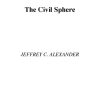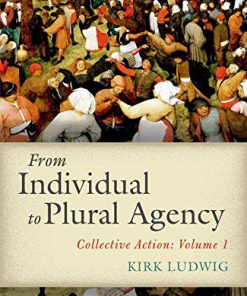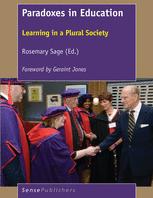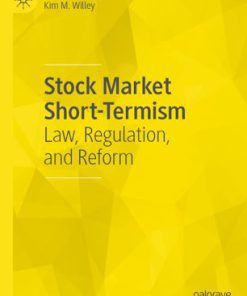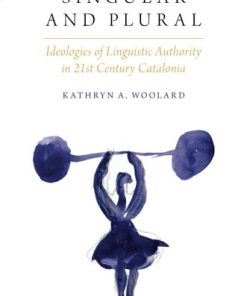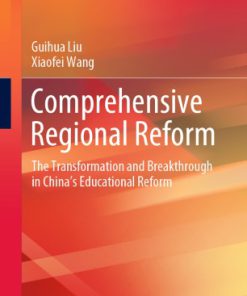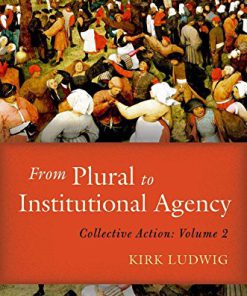Law Reform in Plural Societies 1st edition by Teleiai Lalotoa Mulitalo Ropinisone Silipa Seumanutafa 9783319655246 3319655248
$50.00 Original price was: $50.00.$25.00Current price is: $25.00.
Law Reform in Plural Societies 1st edition by Teleiai Lalotoa Mulitalo Ropinisone Silipa Seumanutafa – Ebook PDF Instant Download/Delivery: 9783319655246, 3319655248
Full download Law Reform in Plural Societies 1st edition after payment
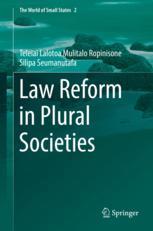
Product details:
• ISBN 10:3319655248
• ISBN 13:9783319655246
• Author:Teleiai Lalotoa Mulitalo Ropinisone Silipa Seumanutafa
Law Reform in Plural Societies
This book asserts that the Pacific Islands continue to struggle with the colonial legacy of plural legal systems, comprising laws and legal institutions from both the common law and the customary legal system. It also investigates the extent to which customary principles and values are accommodated in legislation. Focusing on Samoa, the author argues that South Pacific countries continue to adopt a Western approach to law reform without considering legal pluralism, which often results in laws which are unsuitable and irrelevant to Samoa. In the context of this system of law making, effective law reform in Samoa can only be achieved where the law reform process recognises the legitimacy of the two primary legal systems. The book goes on to present a law reform process that is more relevant and suitable for law making in the Pacific Islands or any post-colonial societies.
Law Reform in Plural Societies 1st Table of contents:
Chapter 1: Introduction
1.1 Divergent Currents
1.2 Geographical Context
1.3 Legal Pluralism and Law Reform
1.4 Overview
References
Court Decision
Legislation
Chapter 2: Law Reform and Legal Pluralism Developments
2.1 Law Reform
2.1.1 Development of Law Reform Institutions and Agents
2.1.2 More Recent Developments
2.1.3 Legal Transplantation
2.1.4 Attempts to Recognise Customary Laws in State Laws
2.1.4.1 Codification of Customary Laws
2.1.4.2 Restatement of Customary Laws
2.1.4.3 Incorporation of Customary Laws by Reference
2.2 Law Reform Commissions (LRCS) and Legal Professions of the Pacific Islands
2.2.1 Proposal for a Regional Law Reform Commission
2.2.2 The Legal Profession
2.3 Legal Pluralism
2.3.1 Old Legal Pluralism, Colonial and Postcolonial Pluralism
2.3.2 New and Postmodern Pluralism
2.3.3 Other Categories of Legal Pluralism
2.4 Legal Pluralism in the Pacific Islands
2.4.1 Legal Pluralism in the Pacific Islands
2.4.2 Regional and Local Jurisprudence
2.4.3 A New Approach To Examining The Customary Law and State Law Divide
2.5 Overview
References
Legislation
Online Databases
Chapter 3: A Research Methodology for the Pacific
3.1 Indigenous and Pacific Research Methodologies
3.1.1 Postcolonial Research Methodologies
3.1.2 Pacific Specific Methodologies
3.1.3 `Talanoa´ Research Methodology
3.2 Utilising Pacific Research Methodologies to Resolve Indigenous and Pacific Issues
3.2.1 `Talanoa´ and Ethical Interview Principles
3.2.2 Analysing `Talanoa´ Interviews
3.2.3 Pacific Islands Legislative Drafters Survey
3.3 Primary Material and Documentary Data
3.3.1 Court Judgments and Hansard Reports
3.3.2 Commission of Inquiry Reports
3.3.3 National Reports
3.3.4 Local Newspaper Research: The Samoa Observer
3.4 Overview
References
Legislation
Online Databases
Chapter 4: The Value of Law Reform: Social and Cultural
4.1 The Ideological Principles Behind Law Making: Customary Laws and State Laws
4.1.1 Social Views on Law Reform
4.1.2 Limited Understanding of State Laws
4.1.3 Lack of Formal Education
4.1.4 Relevance to Village Life
4.1.5 Cultural Factors
4.1.6 Language Barriers
4.1.7 Support from Secondary Data: Local Newspaper Research
4.1.8 Challenges to Address
4.2 Demand for Customs and Respect for the Constitution
4.2.1 Customary Laws as the Basis of the Legal System
4.2.2 Laws in the Samoan Context
4.2.3 Respect for the Constitution
4.2.4 Challenges to Address
4.3 Should Customs be Codified in Samoa´s Laws?
4.3.1 Opposition to Codification
4.3.1.1 Conflicting Values
4.3.1.2 Flexibility
4.3.1.3 Ascertainment and Uniformity
4.3.1.4 Serving the Interests of Non-Locals Only
4.3.1.5 Absence of Customary Structures to Support Customs in Legislation
4.3.1.6 Difficulties for Legislative Drafters
4.3.1.7 Secondary Data: Pacific Legislative Drafters Survey
4.3.2 Benefits of Codification
4.3.2.1 Certainty and Constitutional Compliance
4.4 Emerging Conceptual Challenges
4.4.1 Understanding the Dichotomy
4.4.2 Need to Promote Understanding of State Laws
4.4.3 Customs to be Recognised in State Laws
4.4.4 Emerging Acceptance of Modern Laws
4.4.5 Interdependency
References
Legislation
Chapter 5: State Focused Law Reform: Constitutional Offices, Institutions and Agents
5.1 The Courts
5.1.1 Jurisdiction on Customs
5.1.2 Judicial Training
5.1.3 Role of the Judiciary in Law Reform
5.1.4 Expatriate Judges
5.1.4.1 General Pacific Experiences
5.1.4.2 Interpretive Function of the Court
5.1.4.3 Village Agreement Unenforceable Under Contract Law
5.1.4.4 Obiter Unsupported by Local Realities
5.1.5 Overview: The Courts
5.2 The Parliament
5.2.1 Lack of Systems in Place to Support Assembly of Matai
5.2.1.1 Language in Parliamentary Proceedings
5.2.1.2 Law Making Procedures: Assembly Process and Private Members Bills
5.2.2 Unsuccessful Legal Transplants
5.2.3 Acts of Parliament with Custom References 1962-2015 (Samoa)
5.2.3.1 Acts 1962 (Independence) to 1989
5.2.3.2 Acts from 1990 to 2000
5.2.3.3 Acts After 2000
5.2.3.4 Overview
5.2.4 Analysis: Acts of Parliament and Acts with Customs References (2008-2016)
5.2.5 Overview: The Parliament
5.3 The Executive
5.3.1 Executive Law Making Process
5.3.1.1 Cabinet Handbook
5.3.1.2 Legislative Drafting Handbook
5.3.2 Overview: The Executive
5.4 The Samoa Law Reform Commission (SLRC)
5.4.1 Establishment and Personnel
5.4.1.1 What Model of Law Reform Institution?
5.4.1.2 The Initial Years
5.4.1.3 Western Educated Personnel
5.4.1.4 The SLRC Advisory Board
5.4.2 Law Reform Process
5.4.3 Public Consultation
5.4.3.1 Costly Cultural Protocols
5.4.3.2 Law Reform Consultation
5.4.4 Overview: The SLRC
5.5 Other Law Reform Agents
5.5.1 Commissions of Inquiry (COI)
5.5.1.1 COIs for Customary Reforms
5.5.1.2 COI Investigations and Reforms to Date
5.5.1.3 COI Strengths
5.5.1.4 COI Challenges
5.5.1.5 Law Reform Driven by Both Matais (Customary) and Lawyers (Modern)
5.5.2 The Samoa Law Society (SLS)
5.5.2.1 Law Reform Functions
5.5.2.2 Challenges
5.5.3 Office of the Ombudsman
5.5.3.1 Law Reform Functions
5.5.3.2 Challenges
5.5.4 Non-Government Organisations (NGOs)
5.5.4.1 Law Reform Influence
5.5.4.2 Challenges
5.6 Emerging Conceptual Challenges
5.6.1 Law Reform Framework Not Embedded in Customs
5.6.1.1 Laws Authorising Law Making
5.6.1.2 Procedures Guiding Law Making
5.6.2 Limited Professional Training Opportunities
5.6.3 Involving the Village Structures in the Law Reform Process
5.6.4 Funding Constraints
References
Legislation
Case Law
Online Databases
Chapter 6: Towards Responsive Law Reform
6.1 Public Awareness of State Laws
6.1.1 Develop Community Awareness
6.1.2 Facilitate Public Access to Acts and Court Decisions
6.2 Professional Training: Judiciary, Parliament, Legal Profession
6.2.1 The Judiciary
6.2.1.1 Judicial Training
6.2.1.2 Judicial Guidance Clause
6.2.1.3 Code of Judicial Conduct
6.2.1.4 Court Benchbooks
6.2.1.5 New Developments in the Courts of Samoa
6.2.2 Parliament
6.2.2.1 Professional Training
6.2.2.2 Customary Duties to Village Communities
6.2.2.3 Private Members Bill (PMB)
6.2.2.4 Recent Developments for Parliament
6.2.3 Legal Profession
6.2.3.1 Professional Training on the Rule of Law and Samoan Customs
6.2.3.2 Training on Samoan Language and Cultural Protocols
6.2.3.3 Engaging in Academic Conferences and Quality Research
6.3 State Responsibilities in Law Reform
6.3.1 Constitutional and Legislative Review, Drafting Handbooks
6.3.1.1 Reference Guide to Customary Practices
6.3.1.2 Village Fono Act (1990) Review
6.3.1.3 Cabinet and Drafting Handbooks
6.3.2 Promote Formal Education
6.3.3 National Plans
6.3.3.1 Samoa´s National Plan 2012-2016
6.3.3.2 Law and Justice Sector Plan
6.4 Village Responsibilities in Law Reform
6.4.1 Change of Village Mayor Criteria
6.4.2 Develop Constitutionally Compliant Village Rules
6.5 Managing Funding Constraints
6.5.1 Involving Customary Structures in Law Reform Consultation
6.5.2 Prioritising and Justifying Costs for Customary Reforms
6.6 Local Jurisprudence: Customary Law as the Basis of Common Law
6.7 Legislative Drafters and Draft Laws
6.7.1 Pacific Specific Drafting and Law Reform Training
6.7.2 Drafting in the Samoan Language, Legislative References, Context
6.7.3 Review of Draft Laws for Customary Compliance
6.8 Summary of Responses to Legal Pluralism
References
Legislation
Case Law
Online Databases
Chapter 7: A Suitable Law Reform Framework for Pluralist Countries
7.1 Introduction
7.2 A Suitable Law Reform Process for Samoa
7.2.1 Before the Terms of Reference (TOR)
7.2.1.1 Step 1
7.2.2 After a TOR Is Received by the SLRC
7.2.2.1 Step 2: Research and Consultation
7.2.2.1.1 Doctrinal Research
7.2.2.1.2 Socio-Legal Research
7.2.2.2 Step 3: Issues Paper
7.2.2.3 Step 4: Research and Consultation
7.2.2.4 Step 5: Final Report with Recommendations
7.2.2.5 Step 6: Report Tabled in Parliament
7.2.3 The Draft Bill Process
7.2.3.1 Legislative Drafting
7.2.3.2 Vetting for Customary Compliance
7.2.3.3 Passage Through Parliament
7.2.4 Law Reform Process of Law Reform Agents
7.2.4.1 Commissions of Inquiry, Ombudsman, NGOs
7.3 Legislative Reforms and Guides
7.3.1 Local Jurisprudence
7.3.2 Judicial Clause and Guides
7.3.2.1 Constitutional Amendment
7.3.2.2 Code of Judicial Conduct
7.3.2.3 Court Benchbooks
7.3.3 Reference Guide to Customary Practices
7.3.4 Parliament Guides and Procedures
7.3.4.1 Guide for Members of Parliament
7.3.4.2 Standing Orders of Parliament
7.3.4.3 State Handbooks
7.3.4.3.1 Cabinet Handbook
7.3.4.3.2 Legislative Drafting Handbook of Samoa
7.3.5 Statutory Obligation to Consider Customs
7.4 Conclusions
7.4.1 Systematic Studies on Law Reform
7.4.2 The Challenges of Legal Pluralism for Law Reform in Samoa
7.4.3 Taking Advantage of Pluralism
7.4.4 Emerging Trends
7.4.4.1 A Winning Model?
7.4.4.2 Incorporation by Reference
7.4.4.3 State Initiatives that Accommodate Pluralism
7.5 Future Research
7.5.1 Constitutional Review
7.5.2 Local Jurisprudence
7.5.3 Pacific Island Specific Research
7.5.4 Samoa´s Constitutional Compliant Village Rules
7.5.5 Follow up Research on Legal Pluralism and Law Reform in Samoa
7.5.6 Pacific Research Methodologies
7.5.7 Professional Training that Addresses Customs
References
Legislation
Case Law
Online Databases
Appendices
Appendix A: List of Interview Participants
Appendix B: Commissions of Inquiry and Legislative Reforms
Appendix C: Law Reform Commissions Statutory Functions
Appendix D: Samoa Law Reform Commission: Law Reform Process
Appendix E: Respondents: Pacific Islands Legislative Drafters Survey
People also search for Law Reform in Plural Societies 1st:
law reform in plural societies
plural society examples
plural society meaning
plural societies
plural society definition
You may also like…
Education Studies & Teaching
Early Childhood Education in Chinese Societies 1st Edition Nirmala Rao
Politics & Philosophy
From Individual to Plural Agency: Collective Action I 1st Edition Kirk Ludwig
Education Studies & Teaching
Paradoxes in Education Learning in a Plural Society 1st Edition Rosemary Sage (Auth.)
Business & Economics - Markets
Stock Market Short Termism Law Regulation and Reform Kim Willey 3030229033 9783030229030
Politics & Philosophy - Anthropology
Politics & Philosophy
Atmosphere and Aesthetics: A Plural Perspective Tonino Griffero
Education Studies & Teaching
Politics & Philosophy - Anthropology
From Plural to Institutional Agency: Collective Action II 1st Edition Kirk Ludwig
Jurisprudence & Law - Civil Rights Law



